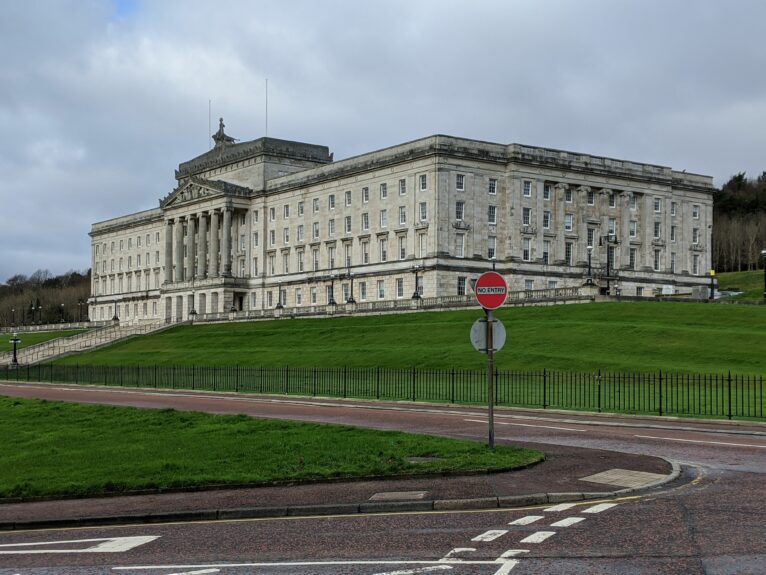New Governance for Dynamic Alignment under the Windsor Framework

Dynamic alignment – whether the UK, or part thereof, would have to or alternatively choose to keep pace with ‘EU law’ (in part, or in full) has been central to the Brexit process from the very beginning. Under the NI Protocol, NI is the only part of the UK that has to remain aligned with a narrow section of the EU rule book focused primarily on the trade of goods and SPS matters. The proposed Windsor Framework makes critical changes to how such alignment will be governed, but also critically, to the likelihood and expansiveness of such alignment between NI and the EU.
The Windsor Framework lays the groundwork for profound North/South divergence
Environmental groups across the island have long called for the island to be recognised, and treated as, a Single Biogeographic Area – whereby as Nature does not respect political borders, environmental rules would benefit from being aligned as much as possible. The 2019 Protocol did not go so far. Its environmental focus as we explained here, was quite narrow, preferring instead to focus on the island as a Single Epidemiological area for SPS purposes. But it contained, as with the 2018 Backstop before, commitments to North/South cooperation, one of the three strands of the Good Friday Agreement, including in the area of environmental action.
While the Command Paper once again reiterates the “long-standing recognition of the special need to protect the biosecurity of the island of Ireland, preventing animal and plant disease“ there is only one mention of North/South cooperation in the UK government Command Paper and none in the Windsor Political Declaration.
Instead of discussing cooperation, the Command Paper is all about recognising pre-existing divergence and announcing that divergence will grow further:
“Inherent in this new way forward is the prospect of significant divergence between the two distinct economies on the island of Ireland – from food and drink to plants and pets, building on the existing differences in every area of economic and political life such as services, migration, currency and taxation”
“The Government recognises that these changes do create a different legal and practical context on the island of Ireland, with substantial and likely increasing divergence between Northern Ireland and Ireland over time – building, of course on the in-built capacity for divergence in the vast majority of areas outside the Protocol including environmental law, professional qualifications, employment law, procurement, immigration, banking, data, and a wide range of services and other rules.”
UK Government Command Paper (p7, p22)
Hence divergence, much more than alignment, is to be the norm. In cases where alignment may be needed, two mechanisms have been either created (the Stormont Brake) or amended (format for stakeholders engagement).
The Stormont Brake: democratic control of dynamic alignment?
Much of the discussion of the substance of the Windsor Framework has focused on the so-called ‘Stormont Brake’ procedure it introduces. Borrowing from the ‘Petition of Concern’ mechanism designed as a safeguard for minority communities in the power-sharing set up in Northern Ireland, when implemented, the Stormont Brake will enable 30 MLAs from at least two parties to register a ‘petition’ or ‘notification’ of concern with the UK government regarding any additions or substantial amendments to EU acts that continue to apply to Northern Ireland under Article 5(4) and Annex 2 (excluding those acts related to trade statistics, bilateral safeguards, trade defence measures, general trade aspects and protection of financial interests). When notifying the UK government of their concerns, MLAs are required to demonstrate that the proposed change in EU rules has a ‘significant impact specific to everyday life’ in Northern Ireland and one that is ‘liable to persist’ (UKG, WF para. 62). It will then be up to the UK government, if it accepts the MLAs petition, to notify the EU in the Joint Committee of the Stormont Brake having been initiated at which point the relevant rule change will be suspended in Northern Ireland. Subsequent application of the new or amended EU act could only happen if the UK and EU agree to this in the Joint Committee. Although not yet confirmed, the UK government have suggested that any reapplication of a rule change after the Stormont Brake had been triggered would be subject to approval via a cross-community vote in the NI Assembly; unless, that is, the UK government determined the circumstances to be “exceptional” and agreed to apply the change in the Joint Committee regardless.
From the perspective of both EU external relations and UK constitutional arrangements, the Stormont Brake is novel. Both sides have compromised. The UK have conceded that the default setting is for EU law changes to apply in Northern Ireland just as the EU have conceded that, on occasion, this may not be the case. It is however important to note that the threshold for initiating the brake is high and, ultimately, it will be for the UK government to decide whether to do so, albeit on the instruction of MLAs.
There are also outstanding questions. Perhaps most pertinent from a policy and legislation perspective – if the brake is applied what happens to affected law? Presumably the relevant ‘EU’ law would continue to apply but in its unamended or non-updated version. Such a scenario could be problematic – raises the prospect of stagnant, legacy EU laws (“undead EU law” as described by Anurag Deb) continuing to apply in Northern Ireland where they neither apply in Great Britain nor, in the same form, in Ireland. Thus, activating the brake risks placing Northern Ireland in a position of dual divergence with its two largest external markets while, at the same time, leaving arrangements for oversight and enforcement of the given area of law/policy very unclear.
NI voices included… and the environment?
An (understandable) focus on the Stormont Brake procedure has obscured some of the softer and potentially more significant new provisions for involvement of NI voices in the implementation of its unique post-Brexit arrangements. While the detail of new structures and procedures are yet to be worked out, the Windsor Framework contains commitments to establish “new mechanisms for stakeholder engagement” including “structured expert groups” with representatives from NI business and civic society with whom the EU and UK will “engage earlier and more intensively” on the implications of any new rules that will or may apply in Northern Ireland (UKG, WF: para 69). Contingent on the nature of implementation, said new structures could provide a means for environmental organisations to input into the evolution of EU laws that still apply in Northern Ireland.
Additional declarations on the part of the UK and EU regarding their intentions to “make full use” of the UK-EU structures set up under the Protocol-come-Windsor Framework are also notable. In particular, the operation of the Specialised Committee which allows for N-S implementation bodies and the NSMC to input make representations. Again, contingent on implementation, this could provide a forum for raising issues of concern for environmental governance if/when there is a cross-border dimension (which is very often the case).




